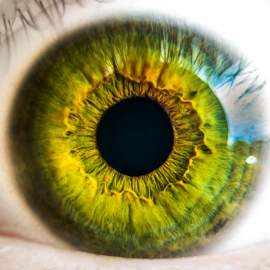There are many different types of glaucoma, each with different treatments
This results in lost vision starting at the periphery (outside) which spreads to the central vision. More than 2.2 million Americans have been diagnosed with glaucoma, and approximately 2 million Americans are undiagnosed.
The most common type of glaucoma in older patients is open-angle. It’s very important to have annual eye exams, because there are not any symptoms during the early stages of glaucoma. During the exam, the eye pressure will be accurately measured, and if necessary, other tests will be performed. A visual field test can show any loss of peripheral vision, and laser mapping of the optic nerve can be used to detect injury from pressure.
Glaucoma is one of the leading causes of blindness in the United States. It’s more common in older adults but can occur at any age. The most common form of glaucoma has no warning signs. In fact, the change in vision is so gradual it’s possible you won’t notice it until the condition is at an advanced stage.
If glaucoma is identified early on, vision loss can be slowed or prevented. Vision loss due to glaucoma can't be restored. That means it's important to have regular eye exams that include eye pressure measurements.
If you have glaucoma, you'll likely require treatment for the rest of your life. Untreated, glaucoma will eventually cause blindness. Even with treatment, about 15 percent of people with glaucoma become blind in at least one eye within 20 years.
The American Academy of Ophthalmology recommends glaucoma screening:
Glaucoma is the result of damage to the optic nerve related to increased pressure in the eye. As the nerve deteriorates, blind spots develop.



Symptoms of glaucoma vary with the type:
Open-angle glaucoma
Acute angle-closure glaucoma
Eyedrops. Two principle types of eye drops are used; the first allows the intraocular fluid to be absorbed more rapidly into the blood stream. The second slows the formation of the intraocular fluid.
S.L.T. Laser. This new laser, developed specifically for glaucoma, opens the drainage channels of the eye, lowering eye pressure. This treatment only takes a few minutes in our office. The advantage of the laser is that the results last for years, and the laser treatment spares the patient the expense and side effects of eye drops.
Narrow-angle glaucoma requires a different treatment than open-angle glaucoma. For patients with narrow angle glaucoma, a laser can be used to prevent an "attack" - when the eye pressure becomes dangerously high in an extremely short period of time. The procedure for treating narrow-angle glaucoma is called an Iridotomy.